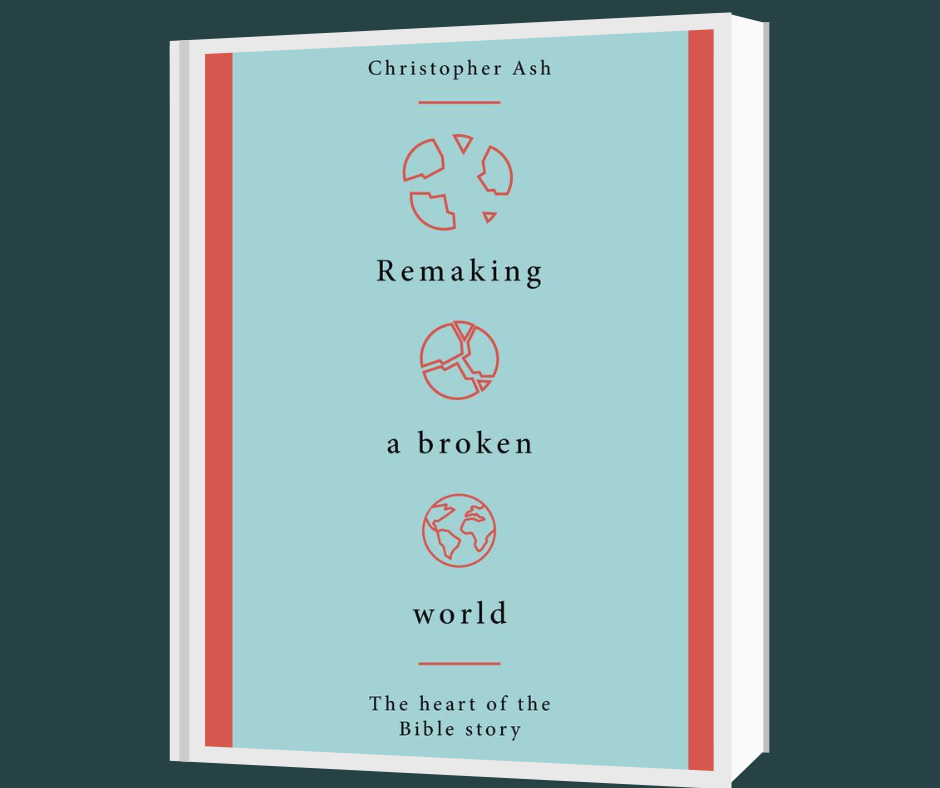Book Reviews
Remaking a Broken World: The Heart of the Bible Story, by Christopher Ash | Review by Rosa Byler

Remaking a Broken World is an overview of the Bible, organized around the themes of gathering and scattering. It is also a compelling case for belonging “in a committed and relational way to an ordinary local church,” which Christopher Ash says may be “the most significant thing you do with your life” (p. 9). While he wrote the book ten years before the pandemic scattered physical assemblies of believers, the individualistic perspective of modern churchgoers was obviously on his mind.
Why another overview of the Bible? Ash forestalls this skeptical question by asking it himself. Bible overviews are not intended to replace actual Bible reading; like varying types of maps, they focus on different features of topography. Emphasizing a central theme means leaving out minor details, but highlighting main elements can increase our sense of the Bible’s unity and embolden us to experience the rest of it. This overview aims “to convince us that the local church is at the heart of the Bible story, close to the heart of God’s purposes, and that it is how a broken world will be remade” (pp. 7, 8).
The book begins and ends with God, the author of one true reality and one true objective morality. The world does not live in harmony under God; it is a broken place because of humans’ breakaway from God’s authority and their ongoing attempts to live without Him. The comforting certainty is that God is at work to remake the world He still loves, and He will be ultimately successful. Local churches are scattered parts of God’s eventual worldwide gathering, demonstrating His glory even in their failures as they continually turn back to Him in repentance and hope.
Ash divides the Bible story into three “acts”: Harmony, Fracture, and New Creation. These are not uniform divisions: the first only lasts through Genesis 3; the middle part has continued ever since; and the last one is pictured near the end of Revelation. Nine important events, places, or symbols connect the storyline through the largest portion.
In Eden, harmony is pictured by humanity gathered in God’s presence. This is broken by sin and illustrated by Babel, where people scatter. The next great gathering is at Sinai, where the Law creates hopeful vision for the reconstructed world. “[The Israelites] are beginning to be gathered, but they still have within themselves the seeds of scattering; it is a miracle they are together at all. . . . They had to learn to assemble under the voice of God, a lesson that must shape local church life today” (p. 66).
This foreshadowing is further developed as David takes the kingship at Jerusalem, and for a while things look promising indeed. David is a shepherd/pastor king who leads the people in genuine worship. Solomon builds a magnificent structure for worship, but his heart turns to idolatry. Most successive kings are not shepherds at all. Before many years pass, the people of God find themselves scattered to Babylon (a literal place that also represents exile, dispersion, and breaking apart).
Golgotha, the ultimate evidence of a world gone wrong, is nonetheless the astonishing catalyst for genuine heart change and the event around which people will gather for the work of remaking. Babel is reversed at Pentecost, and the Old Testament promises of gathering begin to come true in the Church. The story ends with creation finally remade in the New Jerusalem.
Ash describes every church as “a mixture of Jerusalem and Babylon” (p. 186), listing markers of spiritual authenticity and their corresponding counterfeits. The Word of God is the “foundation point” and “defining mark” of church; preaching and Bible teaching must take priority in the assembly. Common difficulties include cultural differences. Ash sees the expectation of “perfectly multicultural” local churches as unrealistic; by the very nature of “local,” churches will reflect the language and culture of their locality. However, true churches will endeavor to “dilute, break down, and undermine as many barriers as they can,” not by social constructs so much as by gathering people around the Word (p. 70).
The book is not particularly attractive in its presentation, being a stiff paperback with thick pages that fall shut unless firmly grasped. Ash’s British spellings, punctuation, and idioms prove a bit distracting; his eschatological position will disappoint some. Yet the clear truth of God’s purpose for the church of Jesus shines from his small-scale exposition of the whole Bible. Remaking a Broken World is a source of renewed courage for investing in one’s local church as well as a firm rebuke of Babylonish tendencies at odds with that purpose.